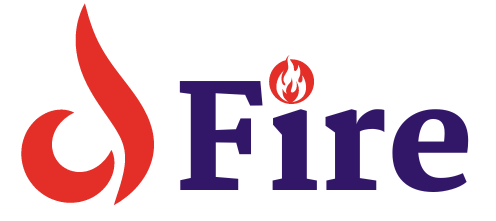Ting Fire Safety ensures your home is protected from electrical fires. It monitors wiring and alerts you to potential hazards.
Fire safety is crucial in every household. Ting Fire Safety offers a smart solution to prevent electrical fires. It continuously monitors your home’s wiring and provides real-time alerts. This proactive approach helps identify potential issues before they become dangerous. Installing Ting Fire Safety can give you peace of mind and protect your family.
Electrical fires are a common yet preventable risk. Ting’s technology detects faults early, reducing the chance of fire. Ensure your home is safe by investing in reliable fire prevention tools. Stay ahead of potential threats with Ting Fire Safety.
Introduction To Fire Safety
Fire safety is crucial for everyone. It saves lives and protects property. Understanding fire safety helps prevent accidents. Ting Fire Safety is here to educate you.
Importance Of Fire Safety
Fire safety is vital for homes, schools, and workplaces. It reduces the risk of fire-related injuries. Knowing safety measures can stop fires from starting.
Fire safety education teaches people to act quickly. Quick action can save lives and reduce damage. Fire drills and safety plans are essential.
Protecting yourself and others is a top priority. Ting Fire Safety offers guidelines to help you stay safe.
Common Fire Hazards
Many things around us can cause fires. Identifying these hazards is key to preventing fires.
| Fire Hazard | Description |
|---|---|
| Unattended Cooking | Leaving food on the stove can start a fire. |
| Electrical Faults | Faulty wiring and overloaded outlets are risky. |
| Flammable Materials | Items like paper and cloth can catch fire easily. |
| Heaters | Placing heaters too close to flammable items is dangerous. |
Always stay alert and follow safety tips. Ting Fire Safety helps you recognize and avoid these hazards.

Credit: newsroom.statefarm.com
Fire Prevention Measures
Implementing effective fire prevention measures is crucial for ensuring the safety of your home and loved ones. By following key practices, you can significantly reduce the risk of fires. Below, we discuss essential measures for maintaining a safe environment.
Proper Electrical Maintenance
Regularly inspect and maintain electrical systems to avoid hazards. Ensure all wiring is up-to-date and free of damage.
- Check for frayed wires and repair them immediately.
- Ensure outlets are not overloaded with plugs.
- Use surge protectors to safeguard your devices.
Install smoke detectors in key areas. Test them monthly to ensure functionality.
Hire a licensed electrician for any complex electrical work. This ensures safety and compliance with codes.
Safe Cooking Practices
Cooking is a common cause of household fires. Follow these tips to cook safely:
- Never leave cooking food unattended.
- Keep flammable items away from stovetops.
- Use timers to remind you of cooking tasks.
Always keep a fire extinguisher in the kitchen. Ensure everyone knows its location and how to use it.
Keep your cooking area clean. Grease buildup can easily catch fire.
Fire Detection Tools
Fire detection tools are essential for home safety. These tools help identify and alert you to potential fire hazards. Ensuring your home has these devices can save lives and property.
Smoke Alarms
Smoke alarms are vital for early fire detection. They sense smoke particles in the air and sound an alarm. This gives you time to escape or put out the fire.
There are two main types of smoke alarms:
- Ionization smoke alarms: Best for detecting fast, flaming fires.
- Photoelectric smoke alarms: Best for detecting slow, smoldering fires.
Installing both types offers better protection. Place them in every bedroom, hallway, and on each level of your home.
Carbon Monoxide Detectors
Carbon monoxide detectors are crucial for preventing carbon monoxide poisoning. Carbon monoxide is an odorless, colorless gas that can be deadly.
These detectors monitor carbon monoxide levels and alert you if they rise. Place detectors near bedrooms and on every level of your home.
| Detector Type | Best For | Location |
|---|---|---|
| Ionization Smoke Alarm | Fast, Flaming Fires | Bedrooms, Hallways, Each Level |
| Photoelectric Smoke Alarm | Slow, Smoldering Fires | Bedrooms, Hallways, Each Level |
| Carbon Monoxide Detector | CO Gas Detection | Bedrooms, Each Level |
Regularly test and maintain your smoke alarms and carbon monoxide detectors. Replace batteries at least once a year. Ensure these devices are always in working condition to keep your family safe.
Creating An Evacuation Plan
Every family needs a fire evacuation plan to stay safe. Knowing what to do can save lives. A well-prepared plan helps everyone escape quickly and safely.
Family Meeting Points
A meeting point is a safe place outside your home. Everyone should gather there after escaping. This helps ensure everyone is safe.
Choose a spot like a neighbor’s porch or a big tree. Make sure it’s easy to find and not too far. Practice going to this spot with your family.
Escape Route Planning
Every room needs at least two escape routes. These can be doors or windows. Make sure each route is clear and easy to use.
- Draw a map of your home.
- Mark all exits with bright colors.
- Show two ways out of every room.
Practice using these routes with your family. Crawl low under smoke, and always check doors for heat before opening. Teach everyone to stop, drop, and roll if their clothes catch fire.
Emergency Contacts
Make a list of emergency contacts. Include numbers for the fire department, police, and a trusted neighbor. Keep this list in a handy place.
| Contact | Number |
|---|---|
| Fire Department | 911 |
| Police | 911 |
| Neighbor | 123-456-7890 |
In an emergency, call these numbers for help. Teach children how to dial emergency numbers. Make sure they know their own home address.
Family Drills
Practice your plan with regular family drills. Do this twice a year. Choose different times and scenarios.
- Sound the alarm.
- Follow escape routes.
- Gather at the meeting point.
Review what worked and what needs improving. Make changes as needed to ensure safety.
Fire Extinguishers
Fire extinguishers are essential tools for fire safety. They help in controlling small fires before they spread. Knowing the types and proper usage is crucial. This section will guide you through the types of fire extinguishers and proper usage techniques.
Types Of Fire Extinguishers
Different fires need different extinguishers. Below is a table summarizing the types of fire extinguishers:
| Type | Use | Example |
|---|---|---|
| Class A | Ordinary combustibles | Wood, paper |
| Class B | Flammable liquids | Gasoline, oil |
| Class C | Electrical fires | Appliances, wiring |
| Class D | Metal fires | Magnesium, titanium |
| Class K | Cooking oils | Kitchen fires |
Proper Usage Techniques
Using a fire extinguisher correctly can save lives. Follow these steps for proper usage:
- Pull the pin to unlock the extinguisher.
- Aim the nozzle at the base of the fire.
- Squeeze the handle to release the agent.
- Sweep the nozzle side to side.
Remember the acronym PASS: Pull, Aim, Squeeze, Sweep. Always read the instructions on your extinguisher. Practice using a fire extinguisher in a safe environment. Stay calm and act quickly in case of a fire.

Credit: www.tingfire.com
Fire-resistant Materials
Fire-resistant materials play a crucial role in fire safety. These materials help prevent the spread of fire. They protect buildings and people from fire hazards. Let’s explore some key types of fire-resistant materials.
Fire-retardant Fabrics
Fire-retardant fabrics are designed to resist ignition. They limit the spread of flames and reduce smoke. These fabrics are used in various applications. Below is a list of common fire-retardant fabrics:
- Wool
- Silk
- Modacrylic
- Fiberglass
- Aramid fibers (e.g., Kevlar, Nomex)
These fabrics are often used in curtains, furniture, and clothing. They provide an extra layer of safety in homes and public spaces.
Fire-resistant Building Materials
Fire-resistant building materials are essential in construction. They help contain fires and protect structures. Here is a table of common fire-resistant building materials:
| Material | Properties |
|---|---|
| Concrete | High heat resistance, non-combustible |
| Brick | Low thermal conductivity, durable |
| Gypsum | Fire-resistant, insulative |
| Steel | Strong, non-combustible |
| Fire-rated glass | Resists heat, prevents spread of flames |
Using these materials in construction enhances fire safety. They are crucial for building codes and safety regulations.
Emergency Contact Information
Keeping emergency contact information handy is crucial for fire safety. It can save lives and property during a fire emergency. Ensure you know who to call and have their details ready.
Local Fire Department
Contacting your local fire department quickly is essential. They are the first responders to any fire-related incident.
| Department | Phone Number | Address |
|---|---|---|
| Central Fire Station | 123-456-7890 | 123 Main St, City |
| Westside Fire Department | 987-654-3210 | 456 Elm St, City |
Emergency Services
Emergency services provide immediate assistance during fires. Keep their contact information accessible.
- Police Department: 911
- Ambulance Services: 911
- Poison Control: 1-800-222-1222
Having these numbers can make a big difference during emergencies. Ensure everyone in your household knows them.
Post-fire Recovery
Experiencing a fire is traumatic. Post-fire recovery can be challenging and complex. It’s crucial to understand the steps to take. This section will guide you through assessing fire damage and handling insurance claims.
Assessing Fire Damage
Assessing fire damage is the first step in recovery. Here’s a quick guide to help you:
- Safety First: Ensure the area is safe before entering.
- Initial Inspection: Check the extent of the damage. Look for structural damage, soot, and water damage from firefighting efforts.
- Document Everything: Take photos and videos of all damage. This documentation will be important for insurance claims.
- Professional Assessment: Hire a professional to assess the structural integrity of your property.
Insurance Claims
Filing insurance claims is essential for financial recovery. Follow these steps for a smooth process:
- Notify Your Insurer: Contact your insurance company immediately. Provide them with the details of the fire.
- Documentation: Submit the photos and videos you took. Include a detailed list of damaged items.
- Forms and Paperwork: Fill out all necessary forms. Be thorough and accurate.
- Adjuster Visit: An insurance adjuster will visit your property. They will assess the damage and estimate the repair costs.
- Follow Up: Keep in touch with your insurer. Ensure all paperwork is processed and claims are approved.
Here is a table summarizing the key points for assessing fire damage and handling insurance claims:
| Step | Description |
|---|---|
| Safety First | Ensure the area is safe before entering. |
| Initial Inspection | Check the extent of damage and document it. |
| Professional Assessment | Hire a professional to check structural integrity. |
| Notify Insurer | Contact your insurance company immediately. |
| Documentation | Submit photos, videos, and a list of damaged items. |
| Forms and Paperwork | Fill out and submit necessary forms accurately. |
| Adjuster Visit | Insurance adjuster will visit to assess the damage. |
| Follow Up | Keep in touch to ensure claims are processed. |
Educating Family Members
Ensuring your family understands fire safety is crucial. Educating family members can save lives. This section covers essential aspects of fire safety education.
Fire Drills
Regular fire drills prepare everyone for emergencies. Practice these drills monthly. Make sure everyone knows the escape routes. Have a designated meeting spot outside. Use a fire drill checklist to ensure nothing is missed.
- Choose an alarm sound.
- Practice crawling low under smoke.
- Assign responsibilities to each family member.
- Check all exits for easy access.
Encourage participation from all family members. Practice makes perfect, and confidence in your plan can save lives.
Fire Safety Training For Kids
Kids need special attention in fire safety training. Teach them basic fire safety rules. Use simple language and clear instructions.
- Stop, Drop, and Roll: Teach them what to do if their clothes catch fire.
- Escape Plan: Show them the quickest way out of the house.
- Emergency Numbers: Ensure they know how to call 911.
- Fire Alarms: Explain the sound and meaning of fire alarms.
Make training fun by using games and activities. Role-playing can help kids remember what to do.
Fire drills and fire safety training for kids are vital steps. They ensure every family member knows what to do in case of a fire.
Frequently Asked Questions
Does Ting Fire Prevention Work?
Yes, ting fire prevention works effectively. It detects electrical hazards early, preventing potential fires. Many users report positive results.
What Is Ting From State Farm?
Ting from State Farm is a smart home device. It monitors electrical systems to prevent fires and other hazards.
How Much Does Ting Cost Per Year?
Ting costs vary based on usage. Average annual cost is around $180 to $300 per year.
Who Owns Ting Fire Safety?
Ting Fire Safety is owned by Whisker Labs. They specialize in fire prevention technology and safety solutions.
Conclusion
Ensuring fire safety with Ting can protect your home and loved ones. This smart device detects electrical hazards early. Invest in Ting for peace of mind and a safer living environment. Don’t wait for a disaster; proactive measures can save lives and property.
Stay safe, stay prepared with Ting.

I’m Abdus Sobur, a highly skilled and professional Fire Safety Officer with a passion for safeguarding lives and property. Over the course of my career, I’ve conducted numerous successful fire safety audits, earning a reputation for excellence in ensuring public safety.
In addition to my role as a Fire Safety Officer, I’m also dedicated to raising awareness about the importance of fire safety. Through my blog, I share insights into the functions of different fire safety equipment, aiming to empower individuals with the knowledge they need to protect themselves and their communities.
I’m driven by a deep commitment to promoting fire safety awareness and preventing fire-related incidents.

